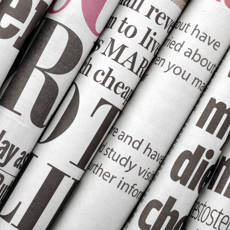How To Write A Press Release
Kai Communications

By Maya Tsoar, Account Executive at Kai Communications.
Being able to write an effective press release is key to getting PR coverage for a business or client, but the art of writing a good press release takes skill and practice. Your article can’t just appear as a form of free advertising dressed up as relevant content. There are few ground rules which all good press releases try to follow as I have discovered during my two years working in PR.
- Think of a punchy headline. This is key to catching a journalist’s eye. Journalists often tell me how many hundreds of press releases they get on a daily basis, so it’s important to make sure your headline stands out. Your headline cannot be ambiguous or wordy. Don’t include any jokes or cryptic messages. It needs to be obvious but also interesting and unique.
- Have a newsworthy angle. Unless you are writing a feature story, there always needs to be an angle that contains something newsworthy such as ‘World Mental Health Day - 14 ways to help your staff’s mental health this winter’ or ‘Neuroplasticity is trending but how does it affect business?’
- Be relevant to the type of press that you are addressing and tailor your press release accordingly. For instance if you are targeting local press, ensure your press release has a local angle. It’s ok to adjust the angle according to the press you are writing for. This will help to maximise coverage and readership over a range of different audiences.
- Grab attention and summarise well. Your press release should succinctly summarise why, where, when, who and what are the consequences in the opening paragraph. The opening paragraph and headline are the main opportunities in a press release to grab a journalist’s attention and bring them in, so they need to be interesting but also well summarised. If you don’t get their attention with the headline and the opening paragraph, then they won’t bother reading on.
- Be detailed but not too wordy. Make sure your article is easy to read, well-structured and doesn’t waffle as this could put journalists off. The easier you make it for a journalist, the more likely they are to use your press release. Make sure all the information they need is included in the circulated article such as references at the end, images, stats to back up your story, quotes from respected experts etc.
- Write to suit your target audience. Whilst your press release should initially appeal to journalists, it will ultimately be circulated to their specific readership. Ensure you cater to that audience by using an appropriate writing style and content (i.e. consider how formal it should be and whether it should include a certain type of jargon). If you are unsure, take some time researching the type of press you are writing for.
- Use quotes. Involving client quotes in press releases helps to highlight their personal insight and opinion on the topic. This can bring an element of expertise to the press release which may be harder to include elsewhere in the fact-based text.
- Write between 1-3 pages. Have in mind that one page is around the minimum length and three pages is the maximum. It’s very easy to write a press release that is too long, but realistically is it as succinct as it could be? Can you say the same thing in less words? Comparatively, press releases which are too short are likely to not have the details the journalist may require.
- End with contact details. Every press release should end with the authors contact details so that journalists can easily figure out who they need to contact about the press release or client should they have any questions.
- Include pictures. Not only do pictures help to create a visual element for the article, but they also give added exposure to the client. Images should be attached to the emailed article, be between 1-5 mb in size and high resolution.















































